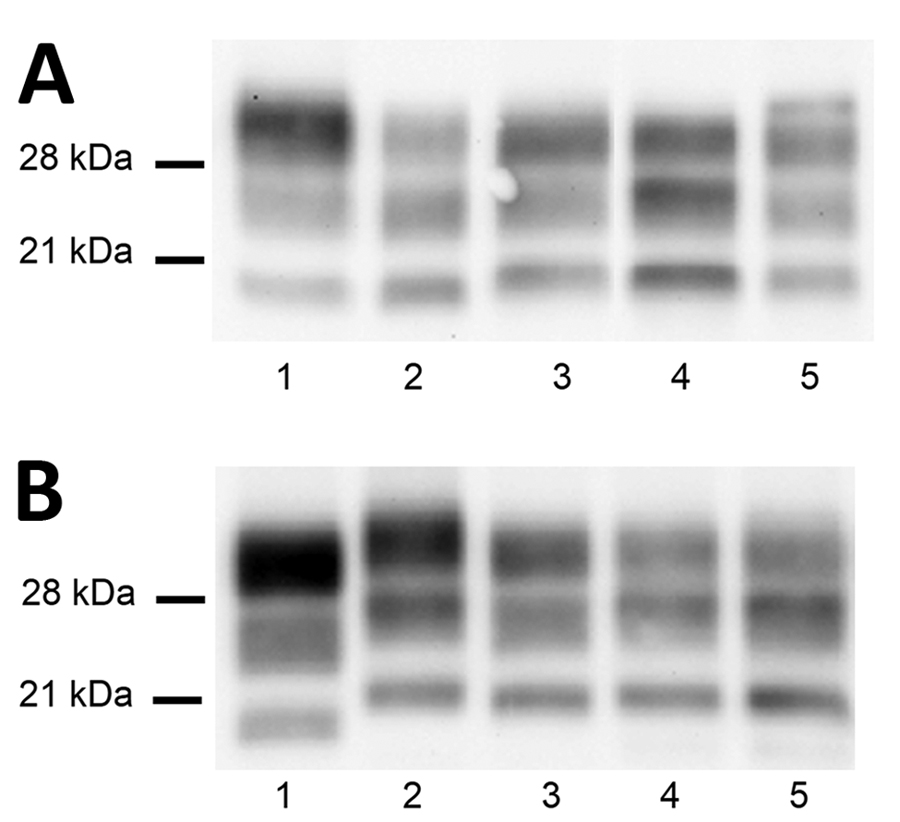Volume 26, Number 6—June 2020
Research
Radical Change in Zoonotic Abilities of Atypical BSE Prion Strains as Evidenced by Crossing of Sheep Species Barrier in Transgenic Mice
Figure 2

Figure 2. Atypical BSE transmission into sheep PrP transgenic mice in a study of atypical BSE transmission using isolates from different countries in Europe and transgenic mouse models overexpressing human normal brain prion protein. A) Brain PrPres profile of L-BSE prions (lane 2) changed once passaged into TgVRQ (lane 3) and TgARQ (lane 5). L-BSE propagation into TgVRQ and TgARQ produced a PrPres profile with a molecular weight slightly higher than C-BSE (lane 1). L-BSE/TgVRQ transmission into TgVal129 mice rendered a PrPres similar to type 2 sCJD profile when transmitted in the same animal model (lane 4). All inoculated animals were analyzed and individual variations in the PrPres profile among them were not found. Lane 1, C-BSE2; lane 2, BSE L2; lane 3, BSE L2/TgVRQ; lane 4, BSE L2/TgVRQ/TgVal129; lane 5, BSE L2/TgARQ. B) Brain PrPres profile of H-BSE prions (lane 2) changed once passaged into TgVRQ (lane 3) and produced a 21 kDa PrPres profile very different from that of C-BSE (lane 1). H-BSE/TgVRQ transmission into TgMet129 (lane 4) and TgVal129 (lane 5) mice rendered a PrPres similar to type 1 sCJD profile when transmitted in the same animal models. All inoculated animals were analyzed and individual variations in the PrPres profile among them were not found. Lane 1, C-BSE2; lane 2, BSE H3; lane 3, BSE H3/TgVRQ; lane 4, BSE H3/TgVRQ/TgMet129; lane 5, BSE H3/TgVRQ/TgVal129. BSE, bovine spongiform encephalopathy; C-BSE, classical bovine spongiform encephatlopathy; PrP, prion protein; PrPres, proteinase K–resistant prion protein; sCJD, sporadic Creutzfeldt-Jakob disease.
1These first authors contributed equally to this article.
2Current affiliation: University of California–San Diego, La Jolla, California, USA.